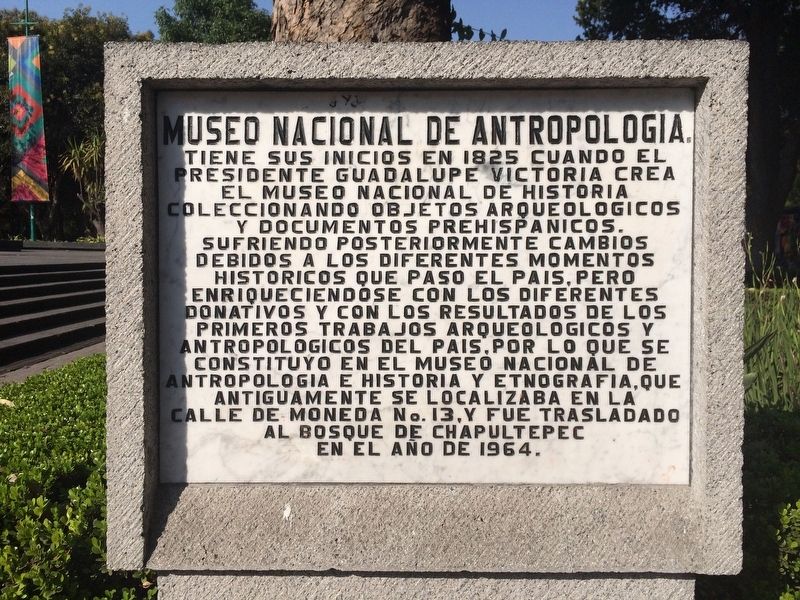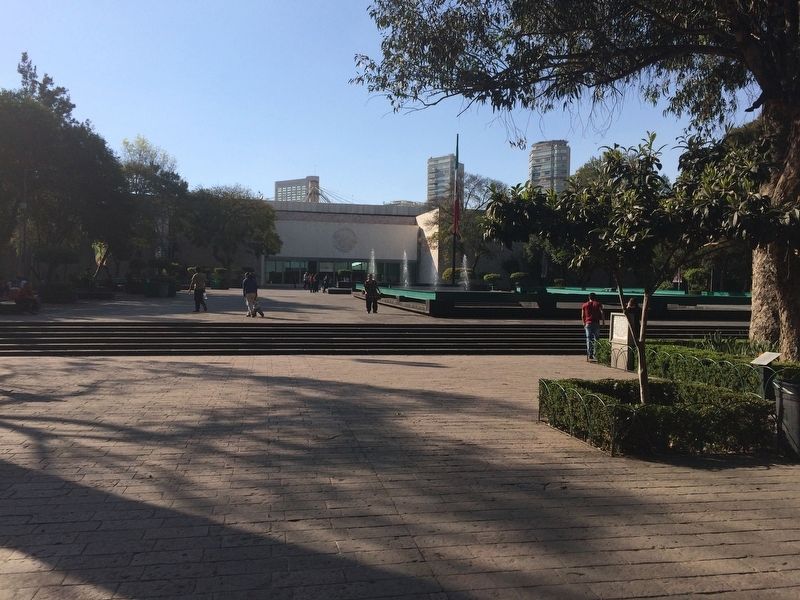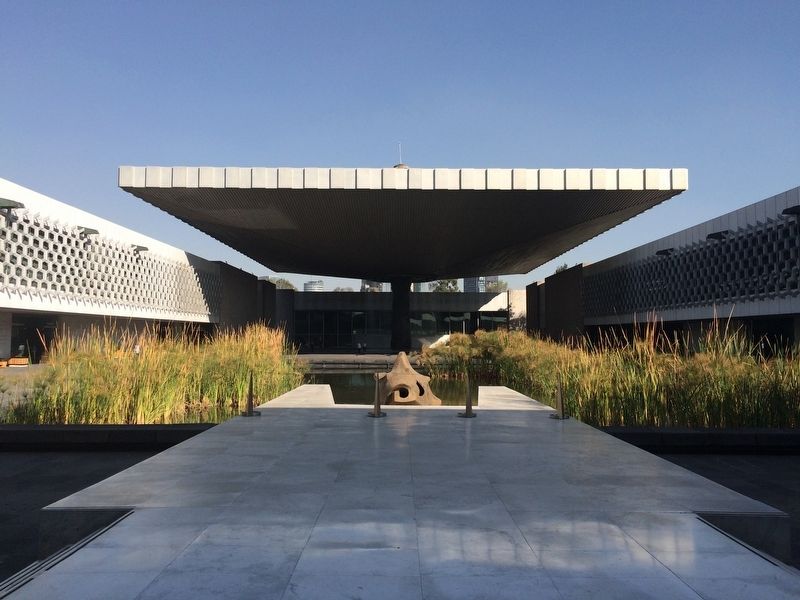Colonia Polanco in Ciudad de México, Mexico — The Valley of Mexico (The Central Highlands)
The National Anthropology Museum of Mexico
Inscription.
Tiene sus inicios en 1825 cuando el Presidente Guadalupe Victoria crea el Museo Nacional de Historia coleccionando objetos arquelogicos y documentos prehispánicos. Sufriendo posteriormente cambios debidos a los diferentes momentos históricos que paso el país, pero enriqueciendose con los diferentes donativos y con los resultados de los primeros trabajos arqueológicos y antropológicos del país, por lo que se contituyo en el Museo Nacional de Antropologia e Historia y Etnografia, que antiguamente se localizaba en la Calle de la Moneda No. 13, y fue trasladado al Bosque de Chapultepec en el año de 1964.
The origins of the museum date to 1825 when President Guadalupe Victoria created the National Museum of History by collecting archaeological objects and pre-hispanic documents. After suffering changes due to the different historical moments that the country has undergone, but enriching its collections with many different donations that made up the first archaeological and anthropological works of the country, it was constituted as the National Museum of Anthropology, History and Ethnography. It was originally located at Calle de la Moneda 13. It was finally transferred to the Chapultepec Forest complex in 1964.
Topics. This historical marker is listed in these topic lists: Anthropology & Archaeology • Man-Made Features • Native Americans • Paleontology. A significant historical year for this entry is 1825.
Location. 19° 25.544′ N, 99° 11.071′ W. Marker is in Ciudad de México. It is in Colonia Polanco. Marker can be reached from the intersection of Avenida Grutas and Paseo de la Reforma. The markers are directly east of the entrance to the National Museum of Anthropology of Mexico. Touch for map. Marker is in this post office area: Ciudad de México 11560, Mexico. Touch for directions.
Other nearby markers. At least 8 other markers are within walking distance of this marker. Monolith of Coatlinchán (about 120 meters away, measured in a direct line); Stela E of Quiriguá (about 180 meters away); Ek Balam Building 1 (about 210 meters away); Hochob Building 2 (about 240 meters away); Stela 6 of Piedras Negras (approx. 0.3 kilometers away); Stela 12 of Piedras Negras (approx. 0.3 kilometers away); Bonampak (approx. 0.3 kilometers away); The Large and Small Lakes at Chapultepec (approx. half a kilometer away). Touch for a list and map of all markers in Ciudad de México.
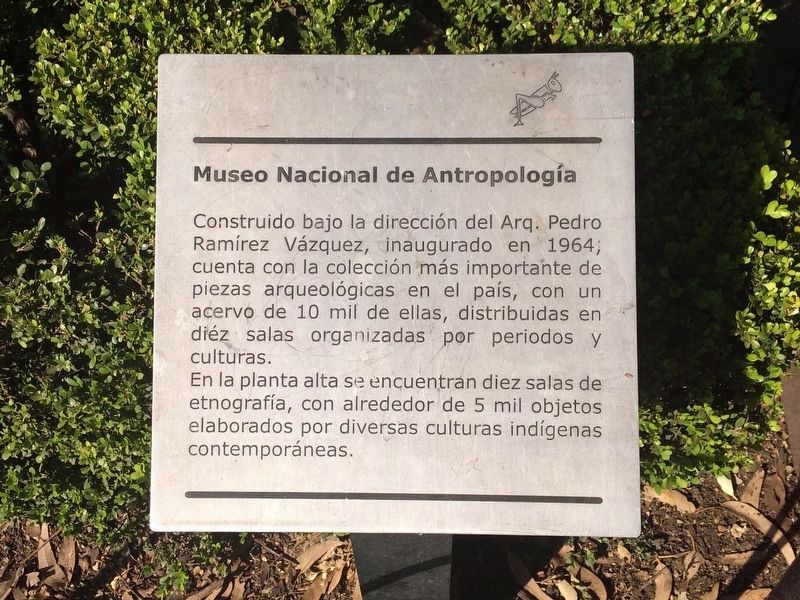
Photographed By J. Makali Bruton, January 25, 2017
2. A nearby additional National Anthropology Museum of Mexico Marker
Museo Nacional de Antropología
Construido bajo la dirección del Arq. Pedro Ramírez Vázquez, inaugurado en 1964, cuenta con la colección más importante de piezas arqueológicas en el país, con un acervo de 10 mil de ellas, distribuidas en diez salas organizadas por periodos y culturas.
En la planta alta se encuentran diez salas de etnografía, con alrededor de 5 mil objetos elaborados por diversas culturas indígenas contemporáneas.
The National Anthropology Museum
Built under the direction of architect Pedro Ramírez Vázquez and inaugurated in 1964, it has the most important collection of archaeological pieces in the country, with a collection of 10,000 items. They are distributed in ten areas, organized by periods and cultures.
On the top floor are ten exhibition areas related to ethnography, with about 5,000 objects made by diverse contemporary indigenous cultures.
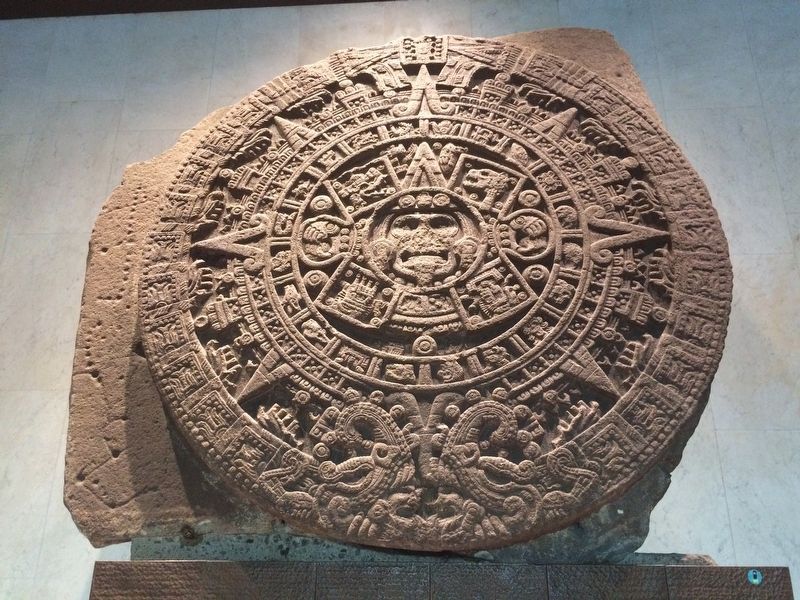
Photographed By J. Makali Bruton, January 25, 2017
5. The Aztec Sun Stone
The museum houses some of the most important Aztec cultural and historical objects. Probably the most famous is this, the Aztec Sun Stone, created in the early decades of the 16th century. It is notable for its image of the Aztec solar diety, Tonatiuh, with a tongue made of a stone knife and hands gripping human hearts.
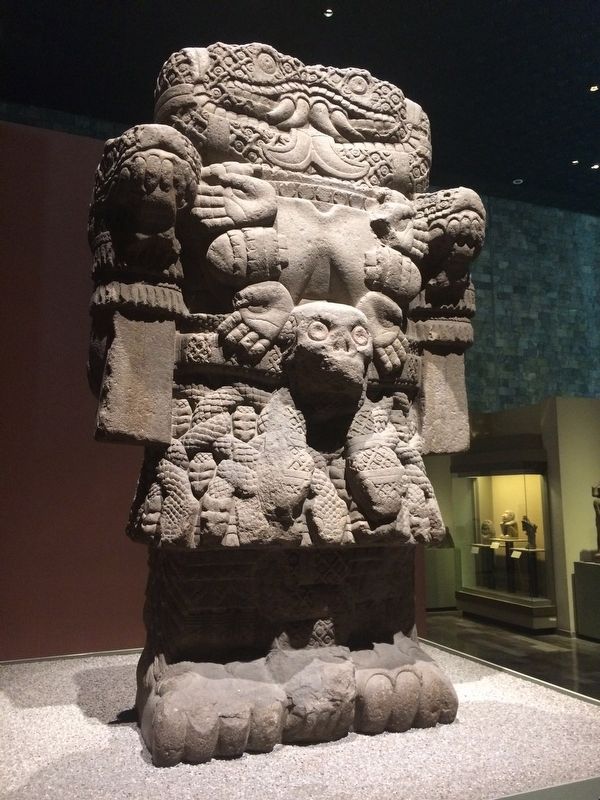
Photographed By J. Makali Bruton, January 25, 2017
6. Coatlicue at The National Anthropology Museum of Mexico
This statue of Coatlicue, originally discovered by Europeans in 1790, is also found at the museum. It represents the Aztec god of Coatlicue ("skirt of snakes"), known as a mother deity. In Aztec mythology she gives birth to the moon, stars, sun and war. The statue includes a skirt made of snakes, a necklace of human hearts and hands and a head made of two opposing snake heads.
Credits. This page was last revised on April 17, 2020. It was originally submitted on May 17, 2017, by J. Makali Bruton of Accra, Ghana. This page has been viewed 183 times since then and 10 times this year. Photos: 1, 2, 3, 4, 5, 6. submitted on May 17, 2017, by J. Makali Bruton of Accra, Ghana.
